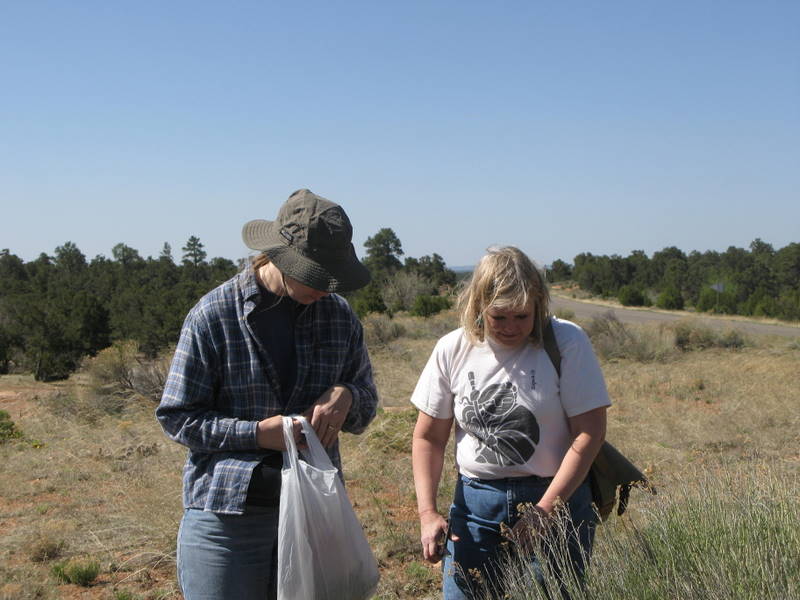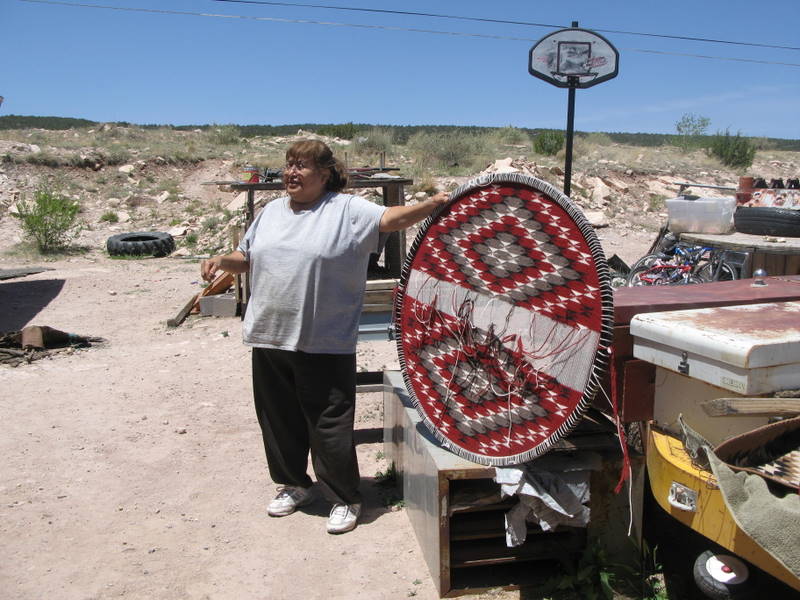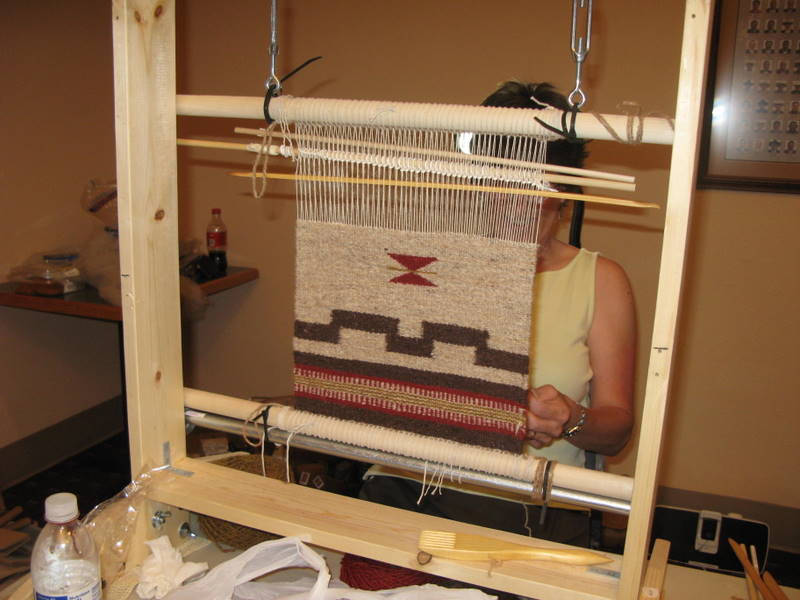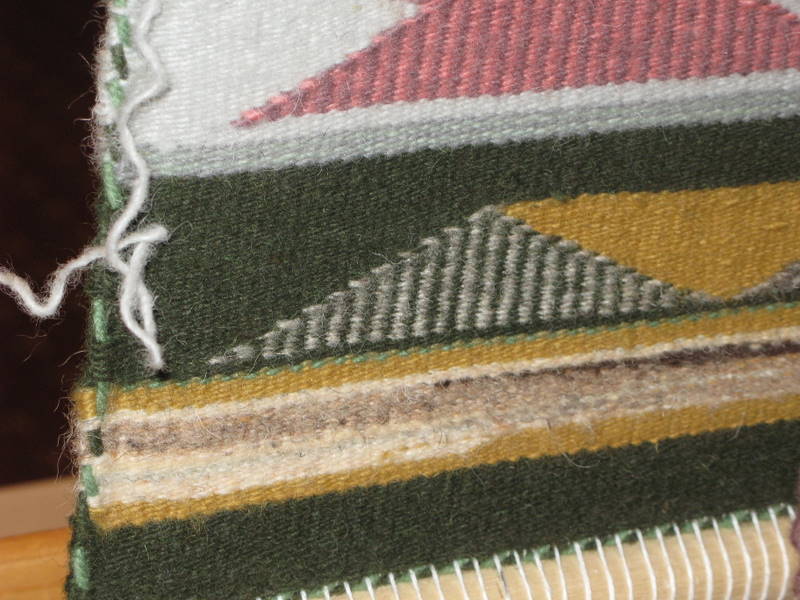Spring Weaving in Beauty Class: Natural Dyes the Navajo Way
Window Rock, AZ Today, we spent the morning with Rose Dedman. Rose’s late mother was a proficient Navajo dye artist and Rose is carrying on her traditional dyeing methods. We went to the Defiance Plateau and picked fragrant spring sage, ground lichen, and rabbitbrush. Rose had been saving Navajo tea and black walnuts, giving us a total of five dye sources. The colors of spring are somewhat muted compared to those from summer, but the soft yellows and greens from the sage and rabbitbrush are truly beautiful and when combined with the walnut brown and Navajo tea, they’ve gotten several of us thinking of future projects.
After we dyed our yarns, we enjoyed a barbeque lunch with Rose and her husband Henry. Rose is also an accomplished weaver and she makes round rugs. The methods she uses are a closely guarded secret, but she graciously showed us a large piece that she has on the loom. You can see Rose with the partially completed 36″ diameter rug below. It’s for sale at $800. Please contact me if you are interested in buying the rug, and I’ll get you in touch with Rose.
In the class room, the students’ progress is wonderful. Below, you can see Mary Mathiowetz’ rug, which is now well past the halfway point. Mary has combined a stepped design with a Van Winkle butterfly in her turned join study. She is trying to finish her piece before our class concludes on Saturday.
We have several returning students who are exploring some advanced techniques. Libby McKee, who is taking the class for a second time, is exploring the raised outline technique. You can see a detail of her piece below. Raised outline is an extension of a stripe weave that Navajo weavers call coal mine or railroad tracks and that conventional handweavers call pick and pick. The threads are manipulated so that there is a raised area created as a pattern is introduced. Libby has found the technique challenging but fascinating. It’s difficult to learn because the threads may travel in different directions in the same row. You can see a detail of Libby’s piece below.
Oops, it’s nearly midnight so I’ll sign off and write more tomorrow.
Hagoshíí (so long for now)
Mary Walker





Yahoo Groups has a Natural Dyes group which can be very helpful and Jenny Dean’s blog (which is linked from the site) is a wealth of information. The first thing you’ll want to do is to become familiar with dye plants that are common in your area. They’re the most economical to use. Bjo Trimble at Grffin Dye Works is also an excellent source of information. There are also several regular readers of the site who are dye enthusiasts, so don’t hesitate to ask a question. It’s a great day to dye!
Good Morning-
I’m a felt-maker; hope to some day be a weaver as well but just haven’t got that far yet!
I’m very interested in plant dyeing, and am looking for classes. Any tips would be welcome!
Thank You!